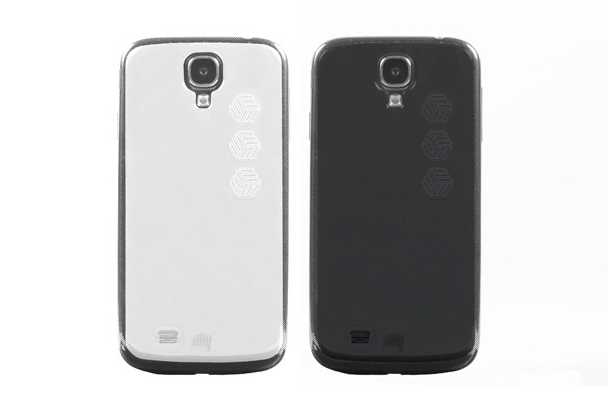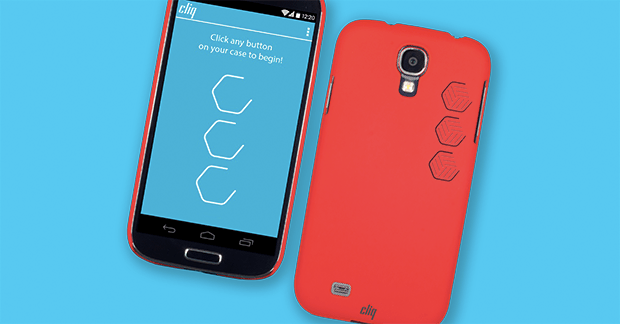Yet another sign of backside phone innovation*, if I can put it that way.
(*tl:dr there’s precious little space to do cool innovative hardware on the front of phones nowadays since most handsets are almost entirely monopolised by huge touchscreens.
Yet as phones get bigger, to accommodate larger fronts, there’s increasing amounts of under-utilized space on the back. Ergo some exciting stuff is going on round the back.)
The latest to contemplate all that unused rear space and see dollar signs is London-based hardware startup Cliq Cases. It’s taken to Kickstarter to crowdfund a range of touch-sensitive smartphone cases for Android devices whose flagship feature is three hardware buttons on the back.
That’s right, they’re adding buttons back so users can cook up their own custom shortcuts. Specifically, pressure-sensitive keys (to help minimize accidental presses). The NFC-powered keys will be customised via a companion app, supporting both short and long presses, to extend the possible shortcut permutations. So you can have six shortcuts in all if you desire.
What can the buttons be programmed to do? Plenty of stuff on the native side — from switching on the phone’s LED light to shortcutting to the torch function, to calling up a predefined contact or sending a pre-written SMS, to acting as a dedicated camera key.
They also note Cliq will be open and reprogrammable so it can be used with Tasker, Automateit and other IFTTT-style apps. So while the keys aren’t initially going to support specific apps, in-app functions will be programmable using Tasker, et al. (And Cliq’s makers say they hope to add app support if there’s enough demand for it in future.)
It’s worth noting that for Cliq to function it needs the Cliq app to be running in the background — although if the app has been closed, pressing one of the buttons will fire it back up again (but there could presumably be a micro lag between pressing Cliq and executing your shortcut in that instance).
Cliq is much like Pressy but with more discrete buttons on tap (three not one). Cliq also incorporates its keys into a smartphone case, so the whole thing doubles up on the utility front by protecting your phone’s rear from pavement scuffs should you drop it.
It’s also making use of NFC rather than the headphone jack to extend the Android hardware. One of the main advances Cliq’s makers are claiming is making a small enough NFC module to fit the unit in a slender case.
So, as well as standard rear-protecting Cliq cases, they are able to offer very thin skins for those that prefer a barely-there case.

Initially they’re making a limited range of cases. First off Cliq requires handsets with NFC that are running Android 4.0 or above to function. But, being as it’s also a case, it’s initially for a small sub-set of Android phones — specifically the Samsung Galaxy S5, S4, Note 3, Motorola’s Moto X, the Nexus 5 and LG G2.
Bad luck, HTC. Cliq’s running a survey to ask for requests on additional models to support.
Cliq’s Carson Brown said the idea for Cliq came out of the ashes of another hardware project — a Bluetooth trackable wallet — that they were working on. NFC had been incorporated into that mix for loyalty cards and, when the project was scrapped, the team realised they could use the same NFC module for Cliq.
“We thought the Pressy project was great because it gave validation to what we were working on, but using one button to launch a variety of actions ultimately leads to Morse code,” he said when asked how Cliq moves things on from that earlier Android hardware button-making endeavor.
“We thought three buttons which could launch six different tasks (short click/long click) would be easier to use and cover 90 percent of users’ scenarios.”
Cliq has a ways to go to make its crowdfunding target. The team is after $40,000 to fund minimum component orders to be viable, and, at the time of writing, has raised just over $6k so far with 30 days left of their campaign to run.
How much will a Cliq cost? Early Kickstarter backers can bag one for $20 or $25. It’ll be $30 thereafter. The team is aiming to ship to backers in August — assuming they don’t get bedeviled by the delays that end up derailing the timelines of many a Kickstarter project.
